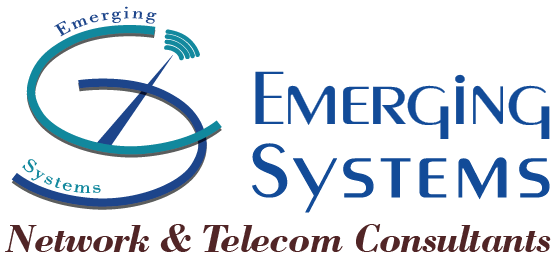We believe that a reliable, efficient, and cost-effective Telecom infrastructure is the demand of every business today. It is emerging truth that telecommunication infrastructure is the backbone of each business; a very short period of telecom services outage can cost millions. Hence, we have made our philosophy for designing telecom infrastructure based on reliability, efficiency, redundancy, and cost-effectiveness as the key ingredients. Our team has designed and implemented several telecom projects for national and multinational companies working in Pakistan.
The area of our expertise includes but is not limited to:
Optical Fiber Network/Communication is a method of transmitting information from one place to another by sending pulses of light through an optical fiber. The light forms an electromagnetic carrier wave that is modulated to carry information. First developed in the 1970s, fiber-optic communication systems have revolutionized the telecommunications industry and have played a major role in the advent of the Information Age. Because of their advantages over electrical transmission, optical fibers have largely replaced copper wire communications in core networks in the developed world.
Microwave Radio Networks are widely used for point-to-point communications because their small wavelength allows conveniently-sized antennas to direct them in narrow beams, which can be pointed directly at the receiving antenna. This allows nearby microwave equipment to use the same frequencies without interfering with each other, as lower frequency radio waves do. Another advantage is that the high frequency of microwaves gives the microwave band a very large information-carrying capacity; the microwave band has a bandwidth 30 times that of all the rest of the radio spectrum below it. A disadvantage is that microwaves are limited to line of sight propagation; they cannot pass around hills or mountains as lower frequency radio waves can.


Satellite-Based Networks A very-small-aperture terminal (VSAT), is a two-way satellite ground station or a stabilized maritime VSAT antenna with a dish antenna that is smaller than 3 meters. The majority of VSAT antennas range from 75 cm to 1.2 m. Data rates typically range from 56 kbit/s up to 4 Mbit/s. VSATs access satellite(s) in geosynchronous orbit to relay data from small remote earth stations (terminals) to other terminals (in mesh topology) or master earth station “hubs” (in star topology).
VSATs are most commonly used to transmit narrowband data (point of sale transactions such as credit card, polling, or RFID data; or SCADA), or broadband data (for the provision of satellite Internet access to remote locations, VoIP, or video). VSATs are also used for transportable, on-the-move (utilizing phased array antennas) or mobile maritime communications.
V/U/HF Networks Two-way radio is a radio that can both transmit and receive (a transceiver), unlike a broadcast receiver which only receives content. A two-way radio (transceiver) allows the operator to have a conversation with other similar radios operating on the same radio frequency (channel). Two-way radios are available in mobile, stationary base, and hand-held portable configurations. Hand-held radios are often called walkie-talkies or handy-talkies.
Two-way radio systems usually operate in a half-duplex mode; that is, the operator can talk, or he can listen, but not at the same time. A push-to-talk or Press To Transmit button activates the transmitter; when it is released the receiver is active. A mobile phone or cellular telephone is an example of a two-way radio that both transmits and receives at the same time (called full-duplex mode). It uses two different radio frequencies (channels) to carry the two directions of the conversation simultaneously
Emerging Systems has the capability in terms of experienced engineers and skilled technicians to perform the complex tasks related to above mentioned telecommunication systems.
Other Services that we Offer
Emerging Systems distinguishes itself as a services-oriented and customer-driven company, providing genuine concern and competent services to its valued client


